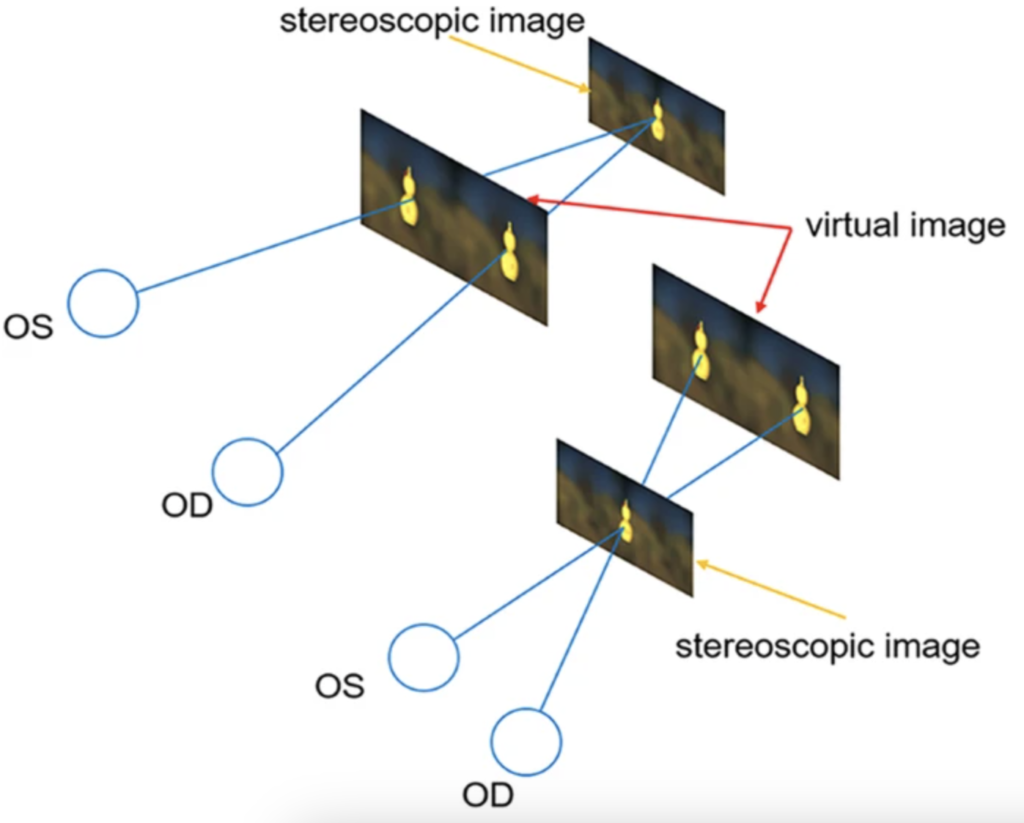Through a New Lens: The Promise of Virtual Reality for Enhancing Vision Therapy
(Posted on Tuesday, September 26, 2023)

This article was published on Forbes on 9/26/2023.
This story is part of a series on the current progression in Regenerative Medicine. This piece is part of a series dedicated to the eye and improvements in restoring vision.
In 1999, I defined regenerative medicine as the collection of interventions that restore to normal function tissues and organs that have been damaged by disease, injured by trauma, or worn by time. I include a full spectrum of chemical, gene, and protein-based medicines, cell-based therapies, and biomechanical interventions that achieve that goal.
Binocular vision disorders can affect how the eyes team up, resulting in various vision issues such as Strabismus, Amblyopia, and Convergence Insufficiency. Proper coordination between the two essential functions of binocular visual function, accommodation and convergence, is crucial to see objects clearly and in three dimensions.
Several treatment options for accommodative and vergence dysfunction are available, including lenses, prisms, and vision therapy. However, recent studies suggest virtual reality is an effective treatment option for those with binocular vision disorders.
What are Binocular Vision Disorders?
Vision disorders can affect how the eyes work together. Strabismus causes misalignment, making the eyes not look in the same direction. Amblyopia results in weak vision in one eye. Convergence Insufficiency hampers the ability to focus on nearby objects, affecting reading and close work. Recent studies suggest that up to 17.6% of the general population may have convergence insufficiency, while up to 20.2% could be affected by accommodative dysfunction.
Binocular visual function is the ability of both eyes to work together in harmony, providing a single, clear image of the surrounding environment. This process involves two essential functions: accommodation and convergence. Accommodation is how the eyes adjust the focus to see objects at varying distances. It consists of a change in the shape of the eye’s lens, which focuses light onto the retina. The convergence process involves turning both eyes inward to focus on an object nearby. This ensures that both eyes focus on the same thing, which helps to create a single, clear image.
Accommodation and convergence are crucial components of binocular vision, as they allow us to see objects clearly and in three dimensions. Proper coordination between these two functions is essential, as any lack of coordination can result in blurred vision and difficulty seeing. Both processes require a complex interplay between the visual, neural, and brain systems, and any abnormalities in these systems can disrupt binocular vision, leading to various vision issues such as Strabismus, Amblyopia, and Convergence Insufficiency. Understanding the complexities of binocular visual function is essential to diagnose and treat vision disorders effectively.
Common Treatments for Binocular Vision Disorders
Several options are available when treating accommodative and vergence dysfunction, including lenses, prisms, and vision therapy. The best treatment approach may involve a combination of these options tailored to the individual’s needs and condition.
Corrective lenses, such as soft or hard contact or prescription eyeglasses, are commonly suggested to address accommodative and vergence dysfunction. These lenses magnify visual clarity and improve focusing ability. In addition, prism lenses rectify alignment issues and alleviate eye fatigue.
Prism lenses fix double vision by bending light rays to present a unified image. They can be combined with glasses to help post-surgery and following head trauma. Different prism lenses can correct vertical/horizontal misalignment and image distortion.
Individuals with trouble with eye coordination and focusing ability due to accommodative and vergence dysfunction can benefit greatly from vision therapy. This treatment option involves targeted exercises and activities designed to enhance binocular vision, which improves visual alignment and coordination. Vision therapy takes place in a clinical setting with the guidance of a trained therapist, or individuals can choose a personalized program for home-based therapy sessions. This office-based vergence/accommodative therapy (OBVAT) is a type of vision therapy that has proven very effective in improving binocular function, especially for patients with convergence insufficiency.
Virtual Reality and Gamification for Vision Disorders
A recent study by Sichuan University in China found that virtual reality is a viable treatment option for those with binocular vision disorders. This pilot randomized controlled trial sought to compare the efficacy of virtual reality-based vision therapy to office-based vergence and accommodative therapy (OBVAT) in young adults dealing with convergence insufficiency or accommodative dysfunction. The randomly assigned participants participate in the virtual reality-based vision therapy group or the office-based vergence/accommodative therapy group.

The virtual reality-based vision therapy uses an innovative technique that presents slightly different images to each eye, resulting in improved visual dissociation. This approach exposed participants to separate images on a virtual reality screen, inducing horizontal vergence demands. These images depicted human and animal figures and objects like gourds. A deliberately blurred background and concurrent stimuli movement was implemented to enhance visibility, necessitating adjustments in vergence. Notably, participants received training to improve both convergent and divergent capabilities.
The vision therapy lasted 12 weeks, and each group had an hour-long session weekly. The assessments occurred at the study’s onset and after 6 and 12 weeks of treatment. They measured binocular visual functions like vergence and accommodation and used a subjective questionnaire-based approach. The study evaluated parameters like distance and near horizontal heterophoria, the ratio of accommodative convergence to accommodation (ACA), monocular accommodative amplitude, and monocular accommodative facility.
After the treatment, patients who received virtual reality-based vision therapy and OBVAT demonstrated significant improvement in convergence insufficiency and accommodative dysfunction. This finding suggests that virtual reality-based vision therapy and OBVAT are innovative and valuable supplementary treatment options for young adults suffering from these conditions. It is important to note, however, that the OBVAT group showed better improvement in a monocular accommodative facility than the virtual reality-based vision therapy group. Nevertheless, this study confirms that virtual reality is a viable new treatment option for binocular vision disorders.
A separate study by Imam Khomeini International University found that a contrast-based virtual reality game can positively impact amblyopia treatment. It explores experimental approaches to improve adult visual function, including a clinical trial video game. The therapy involves evaluating optical parameters and using a 3D video game set with a virtual reality set and an Android device.
It concludes that the proposed 3D video game exhibits potential as an effective treatment for amblyopia in adults. These findings underscore the capacity of innovative technologies in the medical realm, paving the way for enhanced treatment options and, ultimately, more favorable patient outcomes.
The Future of VR in Treating Visual Disorders
Compared to traditional therapy, virtual reality-based vision therapy offers a more engaging and immersive experience that can enhance patient compliance and motivation during therapy sessions. These studies have shown that virtual reality-based vision therapy effectively improves convergence insufficiency and accommodative dysfunction, suggesting its potential as an alternative to traditional treatment.
It is also important to note that optimizing, diversifying, and personalizing virtual reality-based vision therapy can further enhance its effectiveness and reduce patient response time. Future research should explore different training strategies and protocols within virtual reality-based vision therapy to maximize its benefits and tailor the treatment to individual patient needs.
To learn more about the eye, read more stories at www.williamhaseltine.com

